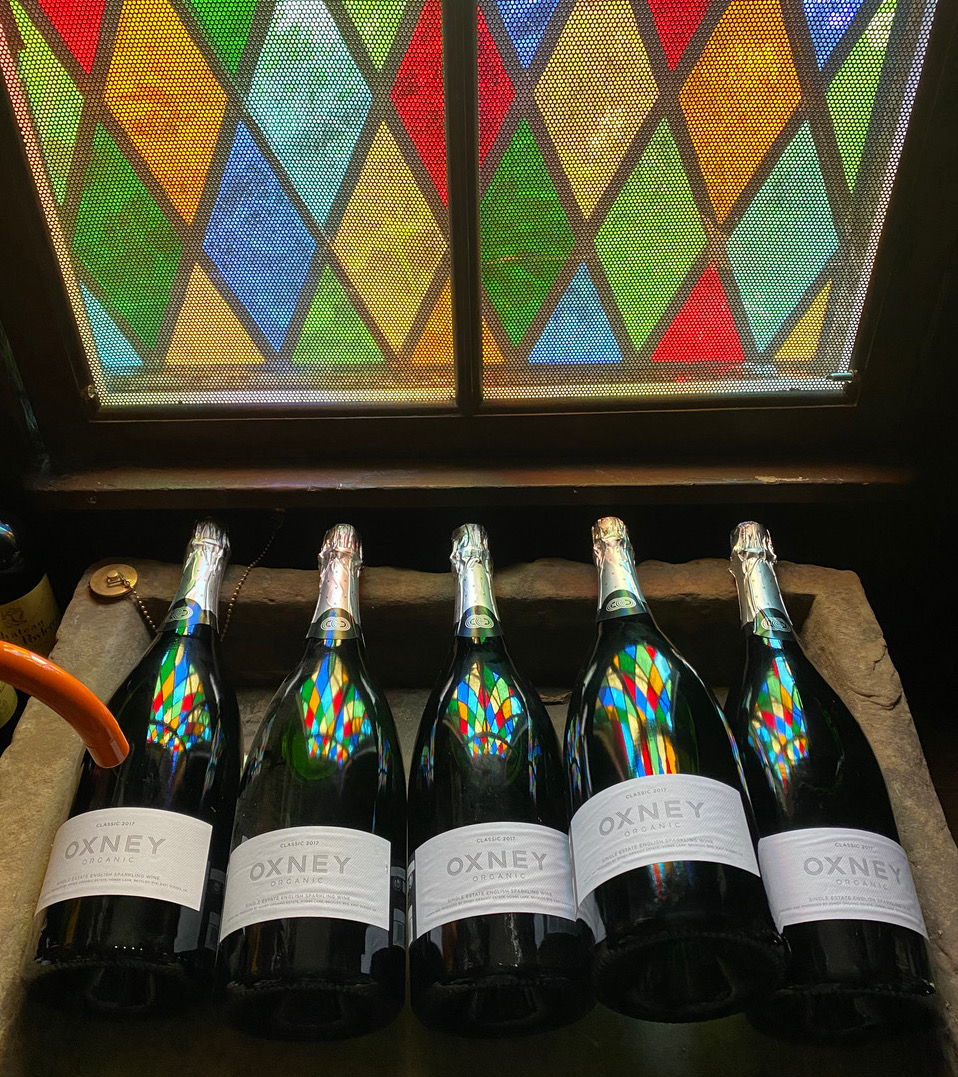Magnificent magnums: Wines made for the party season

What makes a sparkling wine magnum such a unique pleasure? The celebratory size is certainly a big part of it, but there’s some extra alchemy going on inside the bottle too.
We’ve had magnums on our mind (and in our hands) a lot recently. Having sold the last of our 2017 Classic magnums in October, the last few weeks have seen us put the finishing touches to the follow-up vintage. The bottles are now disgorged and having a final rest under cork, ready for release in a few short days. And we can’t wait to share them with you.
If you’re anything like us, you always feel a little jolt of excitement when you see a sparkling magnum. It’s just such an evocative thing, conjuring up a special sense of jollity and revelry. There is simply no better way to start group celebrations that popping the cork on one. And obviously this is the perfect time of year to put that principle to the test.
So what is it that gets wine lovers so frothy about magnums? Yes, there’s the ceremony of unveiling and uncorking a big bottle. But it’s when you peer inside that things start to get really interesting.
First of all, there’s the simple fact of how much liquid is contained in the bottle. 1.5L against the standard 75CL means a magnum goes twice as far. This seems obvious to the point of redundancy but it’s a really important point to have in mind for seamless celebrating.
A magnum or two among friends is far more of a shared occasion than opening a slew of bottles. A dozen people can raise a toast from the same bottle, or smaller groups can savour the same wine for longer with no risk of bottle variation or even a disgruntled subgroup having to settle for a slightly warmer last-minute addition to the cooler. Forgive the pun but with magnums, things just flow more easily!
Delving into the science of magnums reveals some interesting distinctions too. A bigger bottle means different ratios and arrangement of the contents, and these have a marked effect on how the wine develops both during winemaking and afterwards.
Traditional method sparkling wines made in magnums develop subtly different flavours compared to those made in 75CL bottles. We’ve written before about autolysis, the magical process by which dead yeast cells in the bottle impart bakery-shop aromas (pastry, toast, brioche) into the final wine. In magnums, there is a greater surface area of glass inside the bottle for these cells to rest on, meaning more contact with the wine, more pronounced autolytic notes and more delicious complexity.
That’s great news if you’re planning to open a magnum for Christmas 2021. But one further beauty of sparkling magnums like our new 2018 Classic is that they’ll still be getting better in 2031, maybe 2041.
Quality sparkling wines have the capacity to evolve across decades, due to the ever-so gradual ingress of tiny amounts of oxygen though the porous cork. This glacial rate of oxygenation – the hallmark of all great mature wines – is slowed down further in magnums because there is proportionally more wine and less oxygen involved. As a result they remain fresh and vibrant for longer, and age in a more balanced and perhaps more graceful manner. All of which makes a sparkling magnum a spectacular gift for someone with great taste and even greater patience!
Fortunately, the wait is almost over if we’ve convinced you that an Oxney magnum is just the ticket to go on the table or under the tree this Christmas. We’ll be announcing the release date of our 2018 Classic magnums very soon indeed. Sign up to our newsletter below or follow us on our socials to be one of the first to find out.
Follow @oxneyorganicestate on Instagram
Follow @oxneyestate on Twitter
—
Image credit: Nigel Spalding @thephotomulti